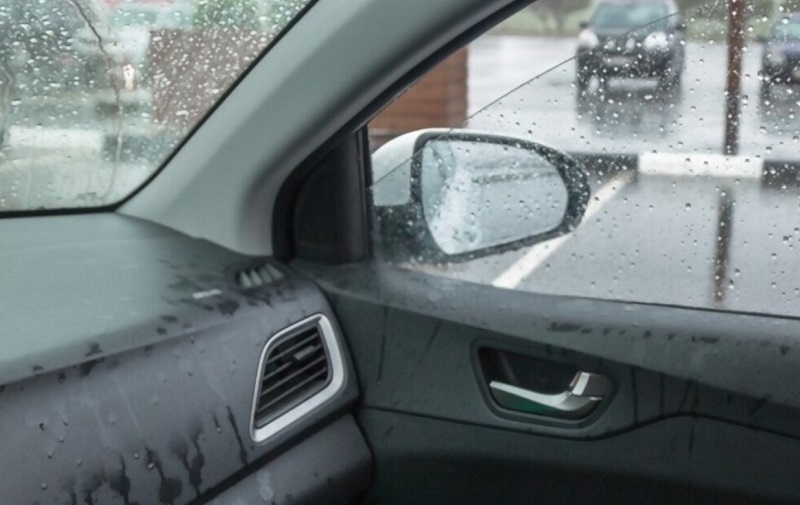Accidents happen. It rained and you forgot to close a partially open window on your car. Or you parked your car on a sunny day, left the windows or top down and a sudden rainstorm passed through the area before you were able to return. Maybe a sunroof developed a leak, or maybe the kids spilled a whole bottle of water on the back seat. Suddenly, you need to dry your car’s interior and dry it quickly before that wet interior turns into a smelly or moldy interior. What are some of the best, and fastest, ways to dry a car’s interior?
The answer depends on the amount of moisture present. Is there standing water on the floor boards? Are the seats completely saturated? Or is there just enough moisture present to cause the windows to be fogged up every time you get into the car? Let’s look at several different scenarios.
It’s Only Slightly Damp

If you are only dealing with conditions like this, a slightly damp interior, a moisture absorber or car dehumidifier may be the simplest solution. These won’t necessarily be the fastest acting solution, but they may be the easiest.
A moisture absorber uses materials like silica gel, bamboo charcoal, or calcium chloride to absorb moisture from the air. Although there are many absorber products on the market in tubs or jars, these can be unsightly sitting in the windshield or on your car’s floor, where they can slide around or be inadvertently knocked over. Instead, use an absorber like the ones from Wisedry or MOSO. These are reusable and come in a small pouch that can be placed on the dashboard. They can be reactivated and used over and over simply by recharging them by leaving them out in the sunlight or heated in a microwave.
A car dehumidifier will be a better performer for you if the moisture level is a little higher, but the car is not severely flooded. These products come in various sizes, can be battery operated, or can run on electricity by plugging them into one of your car’s power outlets. There are low-cost options like the Eva-Dry Wireless Mini Dehumidifier that uses rechargeable silica gel, to more expensive options like Afloia’s Mini Dehumidifier. This particular dehumidifier comes with a heating base that will recharge the silica beads when the need arises.
The best places to locate these products is on the dashboard near the windshield, in the cargo area, or on the center console
If your car is only slightly damp or the windows are fogging up, here is what you can do:
- Start by cracking the windows open so that the moisture can escape.
- Then start the car and turn on the defroster on the high heat setting and the fan to blow on its highest setting.
- Finalize the drying be adding a moisture absorber or car dehumidifier. (Another option for an absorber is baking soda. Don’t sprinkle it throughout the car, place the baking soda in shallow pans or baking sheets and place them in the car.)
If Your Car Is Really Wet

A hard rain, coupled with open car windows may have resulted in a very wet situation. The seats are wet, the carpet is soggy, and there may even be puddles of water standing on the floorboards. This calls for more intense drying actions.
Your first step is to physically remove as much water as possible. It is 500 times easier to extract water than it is to evaporate it. The way to start this process is with a wet/dry vac. Use it to extract any standing water, then use it on the carpet and the seats.
Next use several large bath towels to soak up any water that still remains. Use pressure to help draw out any deep-seated water.
Leave the doors and windows open and use fans to push air through the vehicle. Ordinary box fans will work, but it is even better if you have access to a couple of commercial air movers like the ones that water damage companies use to dry out flooded houses. Usually you can rent these blowers from a tool rental shop by the day.
After using the fans or blowers for a period of time, you can use a car dehumidifier to finish the job. Close all of the doors and windows and place the dehumidifier inside the car. This will finish removing any moisture that still remains.
Video Examples
If you are a visual person and would rather watch how to dry out a car’s interior than read about it, here are a couple of good YouTube videos you can watch:
Final Thoughts
Nature loves to be at equilibrium. As with any type of drying, the drier you can make, and keep, the air inside your car the quicker any excess moisture will be eliminated.
